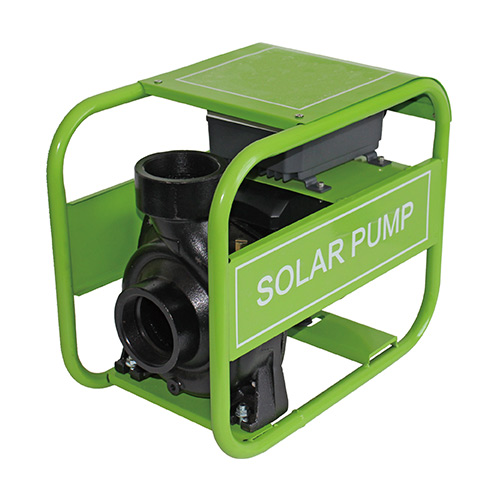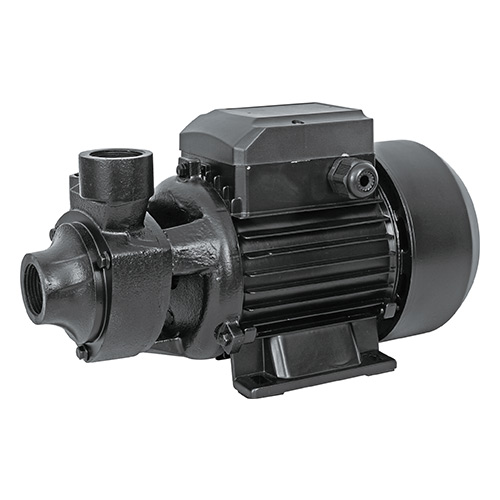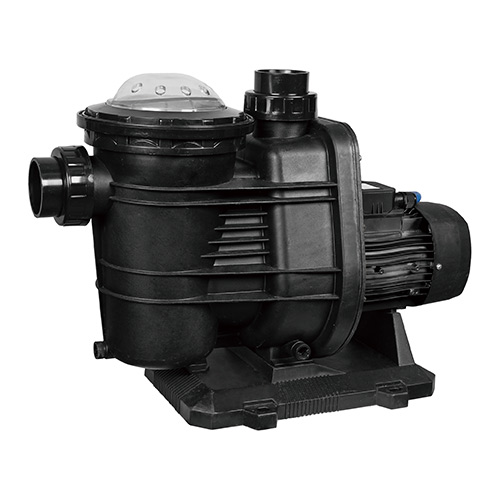NEWS
Welcome to My Blog!
Before we dive into the content, if you’re interested in our products or have any questions, please feel free to visit our Contact Us page on the website. Our team is ready to assist you with inquiries, orders, or any support you may need.
Now, let’s get started on our journey together. I hope you find the content here insightful, engaging, and valuable.
Table of Contents
Introduction

As the world increasingly turns towards sustainable solutions, portable solar water pumps are becoming a go-to option for many applications. From agriculture and livestock watering to off-grid living and recreational use, these pumps provide an energy-efficient, eco-friendly alternative to traditional electric pumps. They are especially useful in areas where access to the electrical grid is limited or where the cost of running electricity is too high.
However, with the vast range of options available, choosing the right portable solar water pump can be daunting. This guide will help you understand the critical factors that determine which solar water pump is best for your needs. We’ll look at essential features, pump types, sizing, and how weather conditions impact performance, while also offering maintenance tips to ensure your pump stays efficient for years.
Key Features to Look for in a Portable Solar Water Pump
Selecting the right solar water pump for your needs starts with understanding its key features. Here are the most important aspects to consider:
- Pump Capacity: The pump’s capacity, typically measured in gallons per minute (GPM) or liters per minute (LPM), determines how much water it can move. If you’re planning to use the pump for large-scale irrigation, a higher GPM is essential. For smaller gardens or livestock watering, a lower capacity might be enough. Make sure the pump’s capacity aligns with your water requirements to avoid overpaying for unnecessary power.
- Solar Panel Power: The effectiveness of the solar pump depends on the solar panel’s power output. If your area experiences plenty of sunshine, a smaller panel might work well. However, regions with less sun exposure will need a larger panel or additional panels to generate the necessary energy for the pump.
- Durability and Material: A good solar water pump should be made from high-quality, weather-resistant materials. Look for pumps built with stainless steel or reinforced plastic to withstand harsh conditions. Durability is crucial, especially if the pump is exposed to the elements or used in demanding environments like farms or construction sites.
How to Calculate the Right Pump Size for Your Needs

Choosing the right solar water pump size is essential to ensure efficient operation. If the pump is too small, it won’t meet your water needs, while an oversized pump will waste energy and cost more than necessary.
To find the right size, you’ll need to calculate two main factors:
- Flow Rate: This refers to how much water you need to pump in a given period. It’s typically measured in liters or gallons per minute (LPM or GPM). Knowing the water demand helps you determine the necessary flow rate.
- Total Dynamic Head (TDH): This is the total height the water needs to be lifted, combined with any friction losses in the pipes. The TDH calculation ensures you pick a pump capable of lifting water to the required height and distance.
Submersible vs. Surface Portable Solar Water Pumps
When choosing a solar water pump, one of the main decisions is whether to opt for a submersible or surface pump. Each has its own advantages and is suited to different types of water sources.
- Submersible Pumps: These pumps are submerged in water, making them ideal for deep wells or ponds. The motor stays submerged, which helps with cooling during operation. Submersible pumps are more efficient when pumping water from deep sources and are often more compact, making them perfect for tight spaces.
- Pros: Highly efficient for deep water, easy to conceal, minimal noise.
- Cons: Can be harder to install and remove, not ideal for shallow water sources.
- Surface Pumps: These pumps are placed above the water source and are generally used for shallow wells or surface water bodies like lakes and rivers. They are easier to install and maintain but may require more energy to pump water over longer distances or heights.
- Pros: Easier to install, ideal for shallow wells, more versatile.
- Cons: Less efficient for deep wells, can require more energy for lifting water over long distances.
Solar Pump Efficiency: How to Maximize Output
To get the best performance from your solar water pump, you need to maximize its efficiency. Here are a few tips to help you do just that:
- Proper Panel Placement: The solar panel should be positioned to capture as much sunlight as possible. Ensure there are no obstructions like trees, buildings, or dirt blocking the panel. For the best results, position the panels at an angle that faces the sun directly throughout the day.
- Battery Storage: If your pump is used for a 24-hour system, having a battery to store solar energy is essential. Batteries allow the pump to run at night or during cloudy weather. Ensure the battery is large enough to store sufficient energy for periods of low sunlight.
- Routine Maintenance: Keep the solar panels clean and free from debris to ensure maximum sunlight absorption. It’s also crucial to check the pump regularly to ensure it’s working smoothly, particularly the filters, which can become clogged with dirt and debris.
Applications of Portable Solar Water Pumps
Portable solar water pumps are versatile and can be used in many different applications. Here are some common use cases:
- Irrigation: For farmers, a portable solar water pump is a perfect solution for irrigating crops, especially in areas without access to the grid. The pump can be placed in ponds, rivers, or shallow wells to move water to crops with minimal environmental impact.
- Livestock Watering: In remote areas, solar pumps can supply clean water for livestock without relying on electricity or diesel-powered systems. This is particularly useful for farms located far from the nearest power grid.
- Off-Grid Living and Camping: If you live off the grid or frequently camp in remote areas, a portable solar water pump is a convenient and eco-friendly way to provide fresh water. It’s ideal for washing, drinking, or watering plants while minimizing your carbon footprint.
- Rainwater Harvesting: Solar pumps are also great for distributing rainwater from storage tanks. This helps conserve municipal water and provides a sustainable water supply for homes or gardens.
Best Brands for Portable Solar Water Pumps

Selecting a quality brand is key to getting a reliable solar water pump. Here are a few trusted brands known for their performance and durability:
- Grundfos: With a long track record in providing efficient water solutions, Grundfos offers high-performance submersible solar water pumps suitable for large farms and commercial applications.
- Shurflo: Shurflo specializes in portable solar pumps designed for small to medium applications. Their pumps are lightweight and easy to transport, making them a great choice for off-grid living and smaller irrigation systems.
- SunPumps: Known for their high-quality solar-powered water pumps, SunPumps provides both submersible and surface pumps ideal for remote applications. Their models are efficient, durable, and low-maintenance.
How Weather Affects Solar Water Pump Performance
The performance of a solar water pump can be significantly influenced by weather conditions. Understanding how different climates can impact pump operation will help you make the most of your system.
- Sunny Climates: In sunny regions, solar water pumps can run at full capacity, providing a consistent flow of water throughout the day. For maximum efficiency, ensure that the solar panels are installed at the best possible angle.
- Cloudy or Rainy Climates: When sunlight is less available, solar pumps may not work as effectively. Adding battery storage helps ensure that the pump continues to operate even during overcast conditions or at night.
- Cold Climates: In freezing temperatures, water pumps and pipes can freeze, reducing efficiency. In these areas, make sure to choose pumps that are built for cold conditions and take extra steps to protect the system from freezing.
Cost Breakdown: Portable Solar Water Pumps vs. Traditional Pumps
Here’s a cost comparison between solar water pumps and traditional electric pumps:
| Feature | Traditional Electric Pump | Portable Solar Water Pump |
|---|---|---|
| Initial Installation Cost | Moderate to High | High (solar panel cost) |
| Running Costs | High (electricity) | Low (solar energy) |
| Maintenance Costs | Moderate to High | Low (minimal upkeep) |
| Lifespan (Years) | 5-7 | 10-15 |
While solar pumps require a higher initial investment, they offer significantly lower operating costs and longer lifespans, making them a better long-term investment.
Tips for Maintaining Your Solar Water Pump

To get the best value out of your solar water pump, regular maintenance is essential:
- Clean Solar Panels: Dust and debris can block sunlight, reducing efficiency. Clean the panels every few weeks to keep them performing at their best.
- Check Filters: Over time, the filters on your pump may become clogged with debris. Regular cleaning ensures a steady water flow.
- Inspect Batteries: If your system includes batteries, make sure they are in good condition. Replace them as needed to prevent system downtime.
Conclusion
Choosing the right portable solar water pump is key to ensuring that your water supply is efficient, cost-effective, and sustainable. By considering the pump’s capacity, material durability, and overall performance, you can select a model that fits your specific needs. Whether you’re looking to irrigate crops, water livestock, or live off the grid, solar water pumps offer an eco-friendly solution with long-term savings. Regular maintenance and proper installation will help you maximize the pump’s efficiency and ensure its longevity.
FAQ
What is the best type of solar water pump for irrigation?
Submersible pumps work well for deeper water sources, while surface pumps are better for shallow sources.
How long do portable solar water pumps last?
A well-maintained pump can last 10 to 15 years, depending on its quality and usage.
Can solar water pumps operate in cloudy conditions?
Yes, but their efficiency is reduced. Battery storage can help maintain consistent performance during cloudy days.

